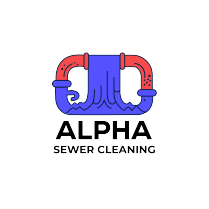24/7 EMERGENCY SERVICES
317 Loring Road Levittown NY 11756
Clogged Drains

Clogged drains are one of the most common plumbing issues homeowners face. They can range from minor inconveniences to serious problems that require professional intervention. This guide provides an in-depth look at what causes clogged drains, how to fix them, and
steps to prevent future blockages.
What Are Clogged Drains?
A clogged drain occurs when water flow is obstructed due to the buildup of debris, foreign objects, or other blockages in the pipe. While some clogs are superficial and can be easily removed, others are deep in the plumbing system and may require advanced tools or professional assistance.
Common Causes of Clogged Drains
Hair Buildup
- Hair is a major cause of clogs in bathroom sinks, tubs, and shower drains. Over time, it combines with soap and grease, forming a dense blockage.
Grease and Fat
- Cooking grease and fat solidify in pipes, leading to clogs in kitchen sinks.
Soap Scum
- Soap residue can accumulate on the walls of pipes, narrowing their diameter and trapping other debris.
Food Waste
- Large food particles, especially fibrous or starchy foods, can clog kitchen drains.
Foreign Objects
- Items like toys, jewelry, and sanitary products can obstruct toilets and drains.
Mineral Deposits
- Hard water leaves mineral deposits inside pipes, reducing water flow and causing blockages.
Tree Roots
- Tree roots can infiltrate underground sewer lines, causing significant damage and blockages.
Toiletries
- Flushing items like wipes, diapers, or cotton swabs can cause serious clogs in toilets.
Signs of a Clogged Drain
Slow Drainage
- Water takes longer than usual to drain from sinks, tubs, or showers.
Foul Odors
- A persistent bad smell may indicate rotting debris or trapped food in the drain.
Water Backups
- Water pooling in unexpected areas, such as sinks or bathtubs, suggests a clog.
Gurgling Sounds
- Air trapped in the pipes can create gurgling noises.
Standing Water
- Persistent standing water in sinks, tubs, or toilets is a clear sign of a blockage.
Overflowing Toilets
- Repeated overflows indicate a clog in the toilet or sewer line.
How to Fix a Clogged Drain
1. Home Remedies
- Boiling Water: Pour boiling water down the drain to dissolve grease or soap scum.
- Baking Soda and Vinegar:
- Pour 1 cup of baking soda, followed by 1 cup of vinegar.
- Wait 15–20 minutes, then flush with hot water.
- Plunger:
- Create a seal around the drain and push forcefully to dislodge the clog.
2. Using Tools
- Drain Snake or Auger:
- Insert the snake into the drain and rotate it to break up the clog.
- Plumbing Tape or Hook:
- Use a hooked wire or tape to pull out hair or debris.
- Wet/Dry Vacuum:
- Use the suction setting to remove clogs in sinks or showers.
3. Chemical Drain Cleaners
- Usage: Effective for dissolving tough grease or hair clogs.
- Caution: Avoid overuse as chemicals can damage pipes and harm the environment.
4. Professional Help
- Hydro Jetting: A high-pressure water jet clears stubborn clogs and cleans pipes.
- Camera Inspection: Identifies the exact location and cause of deep clogs.
- Pipe Repair or Replacement: Necessary for severe damage or tree root infiltration.
Preventing Clogged Drains
Install Drain Covers
- Prevent hair, food, and debris from entering drains.
Dispose of Grease Properly
- Never pour grease or fat down the drain. Use a container to dispose of it.
Flush Drains Regularly
- Use hot water or a baking soda and vinegar solution weekly.
Avoid Flushing Non-Flushable Items
- Only flush toilet paper and human waste down toilets.
Use Garbage Disposal Correctly
- Run cold water when using the disposal and avoid fibrous or starchy foods.
Soften Water
- Install a water softener to reduce mineral deposits in pipes.
Schedule Regular Inspections
- Professional maintenance can identify and resolve minor issues before they escalate.
When to Call a Professional
Persistent Clogs
- If a drain repeatedly clogs despite DIY efforts.
Multiple Clogged Drains
- Indicates a problem in the main sewer line.
Sewage Odors
- Persistent foul smells may signal a serious issue in the sewer system.
Water Damage
- Leaks or water stains suggest broken pipes or severe blockages.
Tree Root Intrusion
- Requires specialized equipment and expertise to remove.
Cost of Drain Cleaning
DIY Solutions
- Minimal costs, typically under $20 for basic tools or cleaners.
Professional Services
- Basic drain cleaning: $100–$300.
- Hydro jetting: $300–$600.
- Sewer line cleaning: $150–$500.
- Pipe repair or replacement: $1,000–$10,000 depending on severity and length.
Environmental Considerations
- Use eco-friendly drain cleaners to minimize environmental impact.
- Dispose of grease and debris responsibly to prevent pollution.
Conclusion
Clogged drains can be a nuisance, but with proper care and maintenance, most issues can be avoided. By understanding the causes and employing preventive measures, homeowners can keep their plumbing systems running smoothly. For persistent or severe clogs, seeking professional help ensures the problem is resolved safely and effectively.
Newsletter
Drain cleaning involves removing clogs, debris, and buildup from pipes to restore proper water flow. It ensures smooth drainage, prevents blockages, and protects plumbing systems from damage. Professional drain cleaning uses tools like hydro jetting or augers for efficient and lasting results.
Design By Oll Solutions

